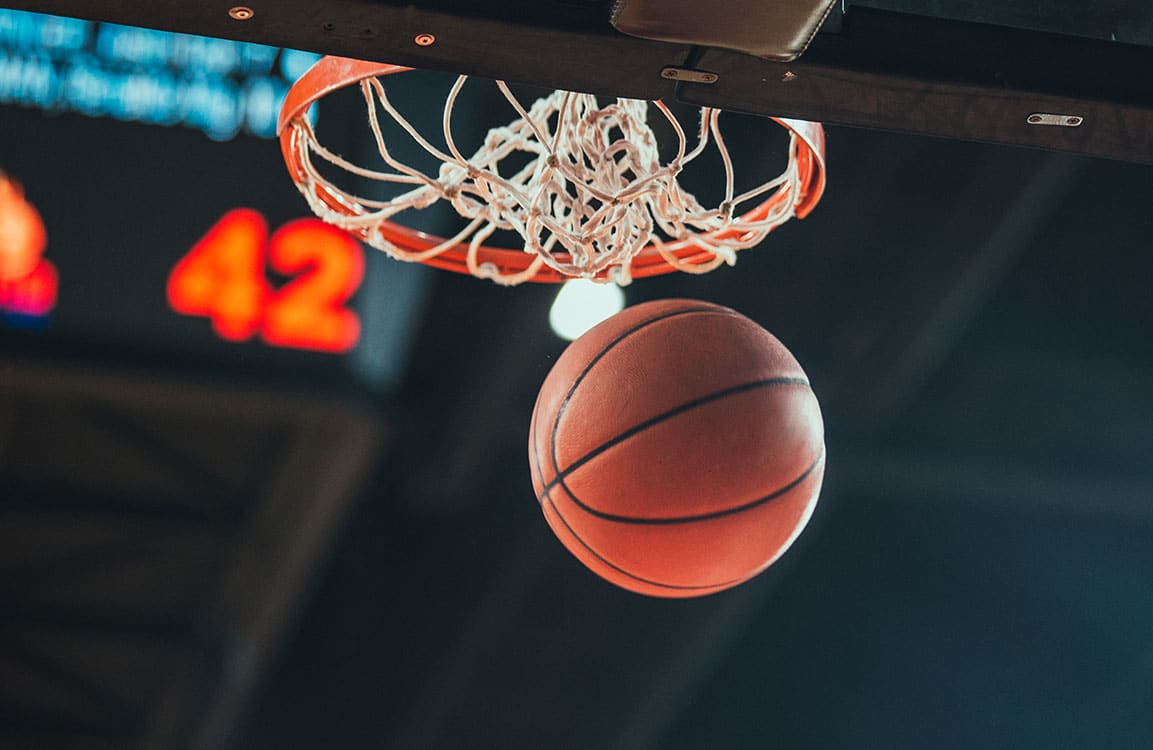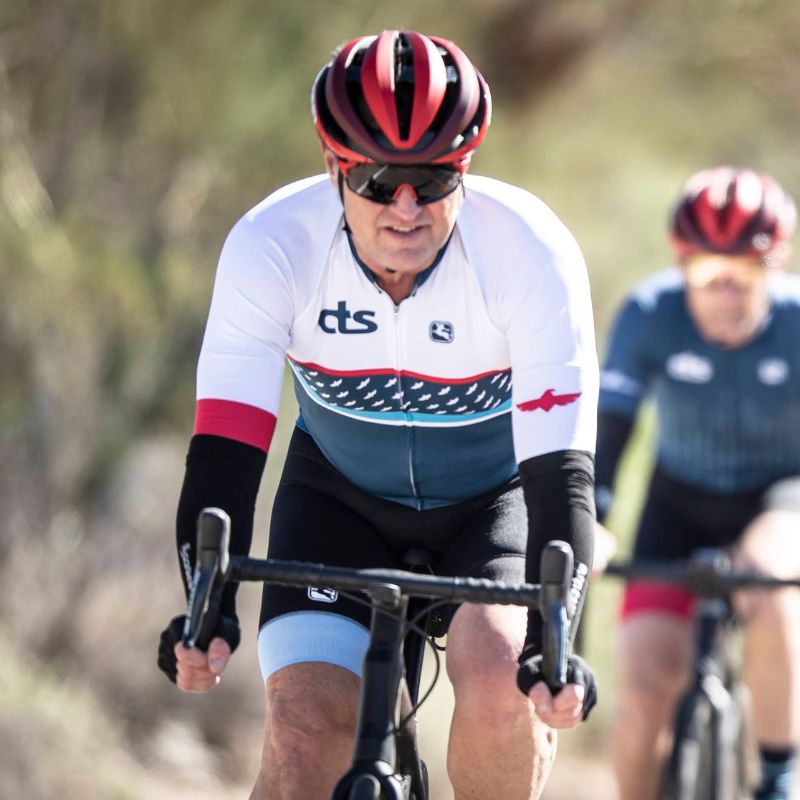
Sports Science Takeaways from the NBA Bubble
By Chris Carmichael,
Founder and Head Coach of CTS
Major disruptions can be great opportunities for learning, and at least in my lifetime there has never been a more far-reaching disruption than the COVID19 pandemic. While it has had–and continues to have–tragic effects on many lives around the world, it has also created research conditions that would have never occurred otherwise. Reduce vehicular traffic by 30% for two months? Switch major corporations nationwide to a work-from-home model all at once? Put millions of kids onto online-learning for a semester? None of those things would have ever happened voluntarily, and I’m not arguing the merits of any of those choices, but there’s no doubt we’ll be examining the data gathered from the past 10 months for decades to come.
On the sports science side, the National Basketball Association Bubble offers one of the most interesting case studies on the power that eliminating distractions can have on human performance. According to ESPN Stats & Information research on travel across sports leagues, as of the 2018-2019 season, “NBA teams averaged 43,534 miles per season, nearly 7% more than NHL teams (40,768 miles), 36% more than MLB teams (31,993) and 441% more than NFL teams (8,049).” In an effort to have a 2020 season at all, the NBA took the extraordinary step of bringing 22 teams and all their associated staff and media to Disney World in Orlando, Florida to finish the season that had already been delayed for months. Games were played in three stadiums, without cheering spectators, and all the players and staff were housed and fed in Disney resorts.
Expectations were low at the outset. First, there was uncertainty that a “bubble” containing so many people and using so many facilities could actually remain virus-free. Then there were questions about whether the quality of play would be terrible because of the prolonged break in the season. And there were legitimate questions about whether viewers would watch games in empty stadiums, if the lack of fans would diminish the quality of play on the court, and whether people would care about basketball while dealing with the virus and social unrest in their own communities.
The Bubble worked remarkably well. No one got sick, which cannot be said for players and staff from America’s other major sports leagues. And not only were the games really entertaining, performances at the individual and team level improved compared to a traditional, travel-heavy season. In a September 10 article by ESPN Senior Writer Baxter Holmes, general managers and trainers repeatedly cited the lack of travel and increased time for rest as some of the Bubble’s greatest benefits for players.
The Portland Trail Blazers president of basketball operations Neil Olshey told ESPN. “We’re seeing the benefit. I think this is consistent across the other teams is you can get treatment right after a game. The time that you would normally be spending in a visiting arena getting showered, getting changed, getting on the bus to the plane and then the altitude affecting swelling — and all that’s eliminated.”
Beyond eliminating travel time and the detrimental effects of crisscrossing time zones, the Bubble also exerted greater control over players’ social lives and nutrition choices off the court, which was conducive to a greater focus on rest, recovery, and optimized nutrition. There was even a focus on non-basketball activities and amenities, so the players and staff achieve some level of lifestyle balance. According to NBA.com, “Hotel ballrooms turned to practice facilities, complete with weight and athletic training spaces, worked great. Team experiences included boating, bowling, fishing, golfing, a game room and hanging at the resort pool. Amenities included laundry service, a barbershop (dubbed the Bubble Shop), mani-pedi’s and a shipping and receiving center which would make Amazon jealous.”
What Athletes Can Learn from the NBA Bubble
As a coach, the biggest takeaway from the NBA Bubble is that training camps work. A cycling, running, or triathlon training camp is essentially a toned-down version of the NBA Bubble. You are removing yourself from your normal environment, creating a separation from your normal habits and stressors, and immersing yourself in your sport for a focused period of time.
We’ve known for a long time that the act of bringing athletes together for a camp is as important, if not more important, than the actual training focus of the camp. Altitude training camps are a perfect example, as CTS Coach Lindsay Golich discusses on this episode of Coach Jason Koop’s Koopcast podcast. Lindsay manages the USOC’s Athlete Performance Lab and the High Altitude & Environmental Training Center (HATC) at the US Olympic Training Center in Colorado Springs.
► Free Cycling Training Assessment Quiz
Take our free 2-minute quiz to discover how effective your training is and get recommendations for how you can improve.
Depending on the athlete, the sport, and the events they are preparing for, Lindsay and her team may bring athletes out to Colorado Springs (6200 feet above sea level) or to Woodland Park (about 20 miles west of Colorado Springs and 8500 feet above sea level) for training camps. While these camps offer the opportunity to increase oxygen-carrying capacity through altitude exposure, Lindsay acknowledges that the camp environment and focus on rest, nutrition, hydration, and reduction in lifestyle stress would have a positive impact on athlete performance even without the altitude component.
Key Elements for a Successful, Productive Training Camp
I’ve been running training camps for 30 years, starting with US National Team Development Camps, then international camps with US National Teams and Olympic Teams, and finally 20 years of group training camps for amateurs and Masters athletes. Whether you sign up for a 2021 CTS Camp or create your own, there are some key elements that make camps successful:
- Enthusiasm: Make sure there’s something more than the miles or hours that you’re excited about. It could be the location, routes, friends, food, etc.
- Going in rested: Treat the camp like a race. Camps are typically 2-3 times your typical training volume for the given period. You want to go in fresh so you have the capacity to handle the increased volume.
- Taking Day 1 easy(ish): Athletes make a big mistake by riding hard the first day of a camp or cycling tour. It is better to have strong rides day after day than to crush it Day 1 and struggle from Day 3 to the end.
- Eliminating outside stressors: Especially now that we can work from anywhere, it is even more important to give yourself time to disconnect from the real world. I even encourage athletes to limit time on the internet, social media, and the phone.
- Enjoying good food: Nutrition plays a huge role in a successful training camp because the workload is higher than normal. Do not combine elevated training volume with restricted caloric intake. Instead, dedicate more time and thought to cooking and eating great food, lingering over meals with friends, and staying hydrated.
- Optimizing relaxation: Get as much sleep as possible and incorporate recovery modalities that work for you. These could include massage, meditation, yoga, or pneumatic compression boots, but remember that adding more activities – even recovery activities – isn’t always better than taking a nap or reading a book.
Above all, training camps are opportunities to spend time doing something you love. We spend the majority of our adult lives trying to keep all the plates spinning. It’s nice, every once in a while, to get into a bubble that lets us focus on just one thing.
► FREE Mini-Course: Learn How to Maximize Your Limited Training Time
Learn step-by-step how to overcome limited training time and get faster. Walk away with a personalized plan to increase your performance.
"*" indicates required fields


Comments 8
Athletes typically utilize training camps to prepare for upcoming events, and in competitive sports, to focus on developing skills and strategies to defeat their opponents.
All 22 teams were checking in for a stay of at least six weeks, and for two of them, the bubble would be the only place they’d visit for more than three months.
I am happy to say that the quality content that you have shared with us, is quit useful and informative. Thanks for sharing this.
This is a helpful post. Thank you for sharing it.
yes its an informative article
The disrespect is not forgetful at any cost management should improve it.
I will not watch another “professional basketball, football, or baseball game” the disrespect of both players and owners is unforgiveable! This is tho only lesson I’ve learned from them!
Dido – plus I have more workouts. When pro athletes realize that Americans pay for them to play and not whatever they think I will resume watching.